Leslie Viaduct
Leslie Viaduct
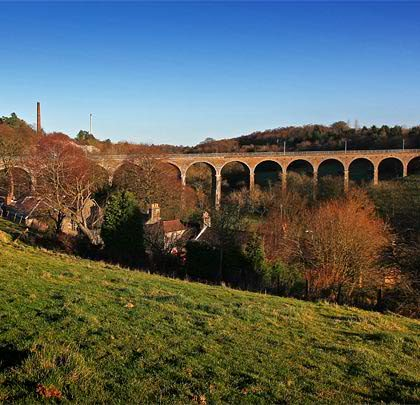
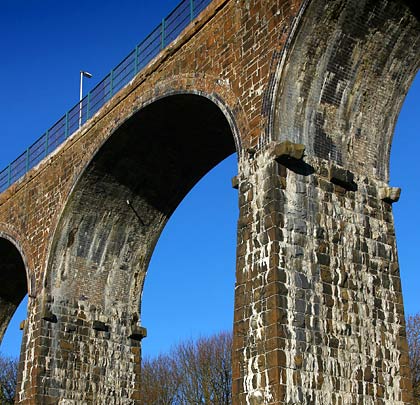
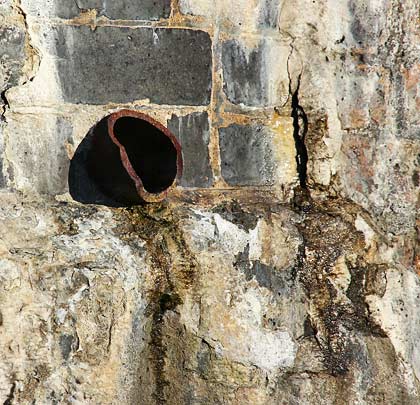
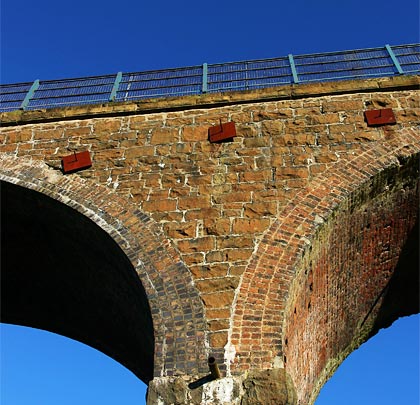
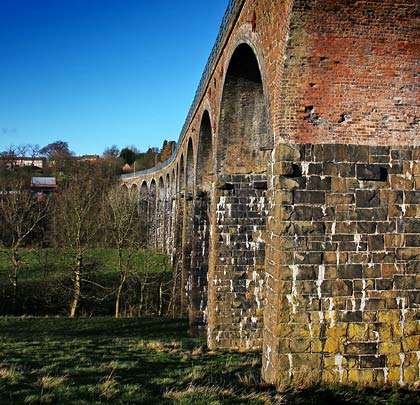
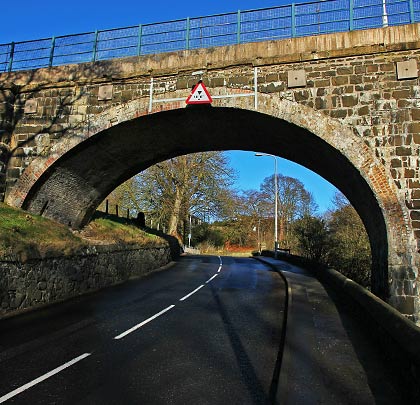
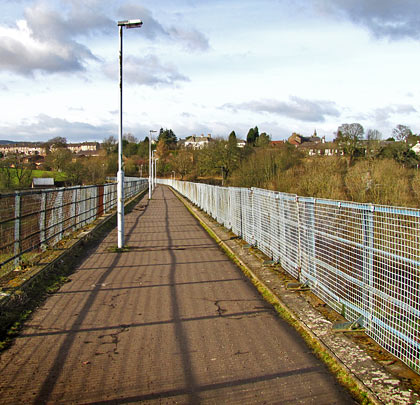
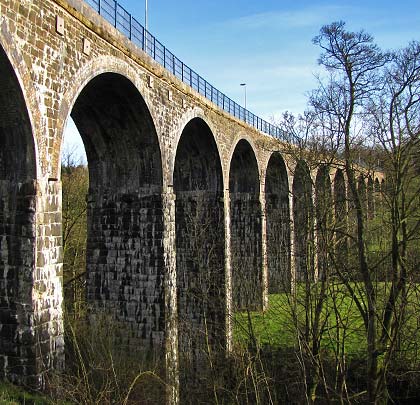








Extending for 4¼ miles from Markinch, the single-track Leslie Railway received royal assent in 1857 and opened for both goods and passenger traffic on Friday 1st February 1861. Its main source of income came from several local paper mills.
Engineered by the prolific and ill-fated Thomas Bouch, the line featured two substantial viaducts at opposite ends: Balbirnie, just to the west of Auchmuty Junction from where a branch ran to Auchmuty mills, and Leslie (or Cabbagehall) on the approach to the terminus’ buffer stops. The latter was supposedly a product of the Earl of Rothes’ objection to the line passing over his land but would undoubtedly have had to be elevated anyway to cross the River Leven.
The viaduct, with 14 spans, is 214 yards long and features a curve to the south of around 15 chains in radius through its western half. It comprises segmental arches of five brick rings and snecked rubble spandrels which are tied together with bars and pattress plates. Rusticated ashlar blocks form the battered piers, some of which are stained with mineral deposits from water leaching through the arches. It originally had low flat-coped parapets with cast-iron railings though these have been removed as part of its conversion to carry the Boblingen Way cycle path.
The Leslie Railway was consumed into the North British empire in 1872 but closure came to most of it on 9th October 1967; trains however continued to serve Auchmuty paper mills. In the early Noughties, ground movement caused cracks to appear in the structure, resulting in a £600,000 refurbishment programme which got underway in spring 2003 and resulted in the opening of a formal path. The structure was afforded a Grade B listing in November 1972.







